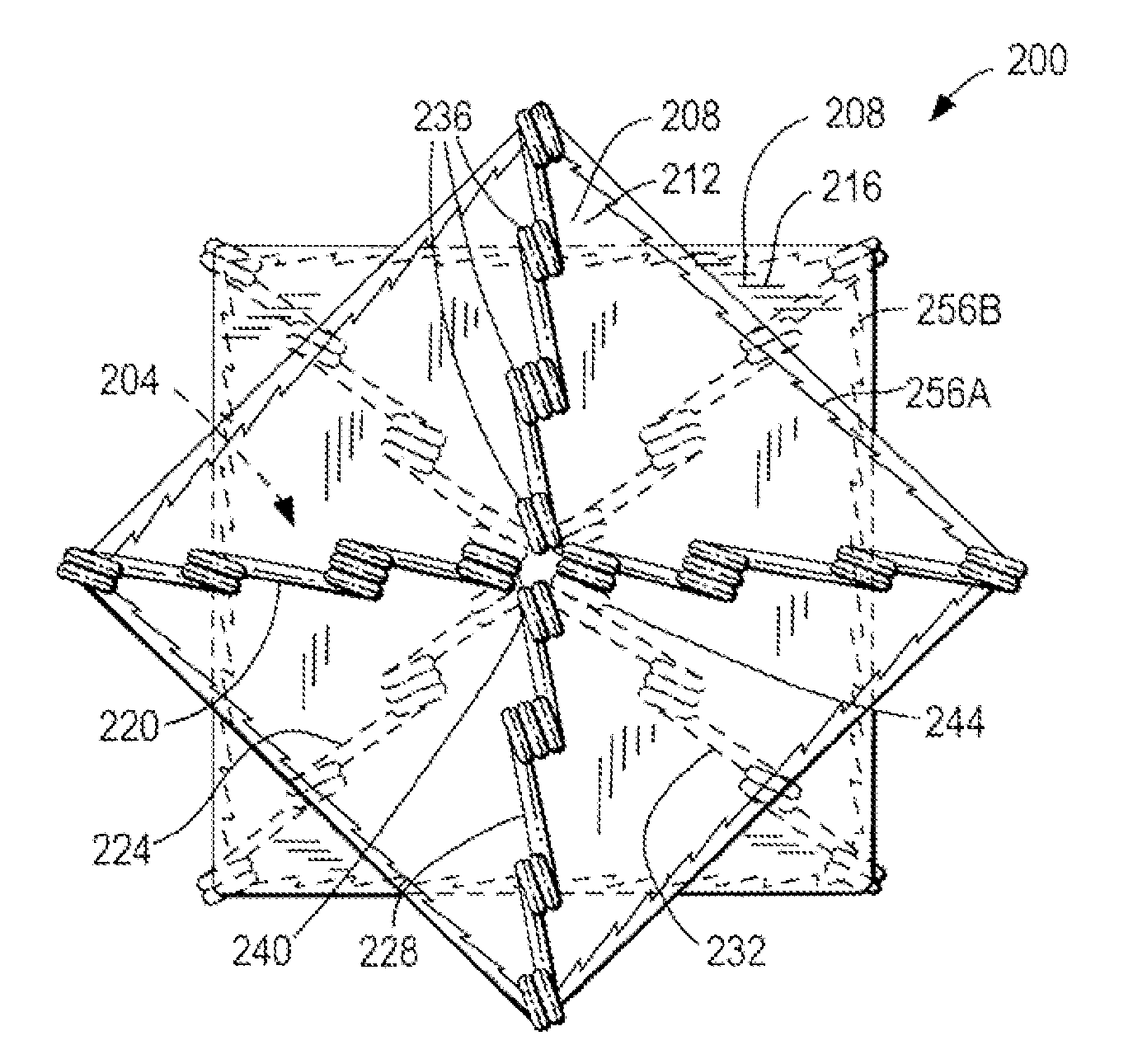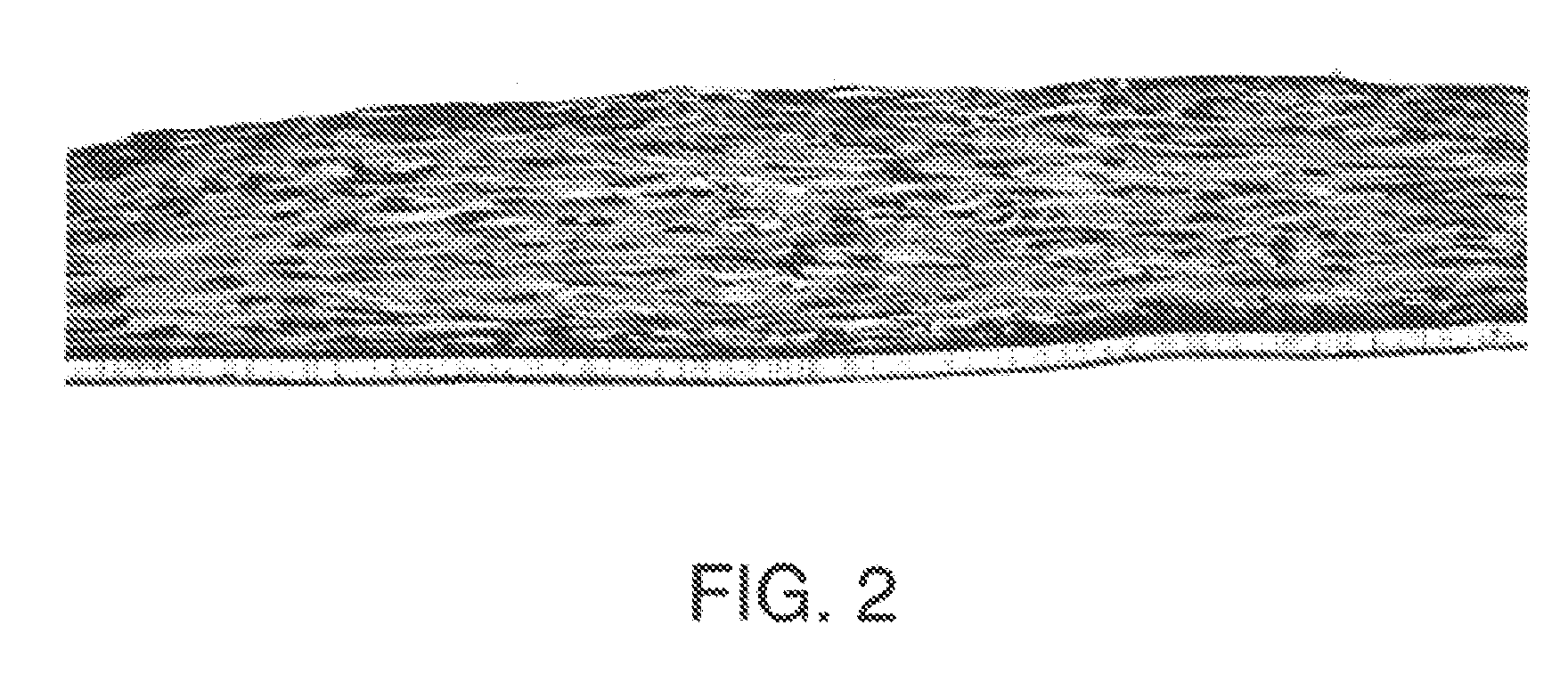Bioengineered tissue constructs and cardiac uses thereof
a bioengineered tissue and cardiac technology, applied in the field of bioengineered tissue constructs and cardiac uses thereof, can solve the problems of inability to use as a form of treatment for cardiac conditions, high degree of inherent risk, and inability to achieve the effect of easy and peeling removal
- Summary
- Abstract
- Description
- Claims
- Application Information
AI Technical Summary
Benefits of technology
Problems solved by technology
Method used
Image
Examples
example 1
Formation of a Collagenous Matrix by Human Neonatal Foreskin Fibroblasts
[0151]Human neonatal foreskin fibroblasts (originated at Organogenesis, Inc. Canton, Mass.) were seeded at 5×105 cells / 162 cm2 tissue culture treated flask (Costar Corp., Cambridge, Mass., cat #3150) and grown in growth medium. The growth medium consisted of: Dulbecco's Modified Eagle's medium (DMEM) (high glucose formulation, without L-glutamine, BioWhittaker, Walkersville, Md.) supplemented with 10% newborn calf serum (NBCS) (HyClone Laboratories, Inc., Logan, Utah) and 4 mM L-glutamine (BioWhittaker, Walkersville, Md.). The cells were maintained in an incubator at 37±1° C. with an atmosphere of 10±1% CO2. The medium was replaced with freshly prepared medium every two to three days. After 8 days in culture, the cells had grown to confluence, that is, the cells had formed a packed monolayer along the bottom of the tissue culture flask, and the medium was aspirated from the culture flask. To rinse the monolayer,...
example 2
Full Thickness Skin Construct
[0159]Using a dermal construct formed using the method described in Example 1, normal human neonatal foreskin epidermal keratinocytes (originated at Organogenesis, Inc. Canton, Mass.) were plated onto the cell-matrix construct to form the epidermal layer of the skin construct.
[0160]The medium was aseptically removed from the culture insert and its surrounds. Normal human epidermal keratinocytes were scaled up to passage 4 from frozen subculture cell stock to confluence. Cells were then released from the culture dishes using trypsin-versene, pooled, centrifuged to form a cell pellet, resuspended in epidermalization medium, counted and seeded on top of the membrane at a density of 4.5×104 cells / cm2. The constructs are then incubated for 90 minutes at 37±1° C., 10% CO2 to allow the keratinocytes to attach. After the incubation, the constructs were submerged in epidermalization medium. The epidermalization medium is composed of: a 3:1 base mixture of Dulbecc...
example 3
In Vitro Formation of a Collagenous Matrix by Human Neonatal Foreskin Fibroblasts in Chemically Defined Medium
[0164]Human neonatal foreskin fibroblasts were expanded using the procedure described in Example 1. Cells were then resuspended to a concentration of 3×106 cells / ml, and seeded on to 0.4 micron pore size, 24 mm diameter tissue culture treated membrane inserts in a six-well tray at a density of 3.0×106 cells / TW (6.6×105 cells / cm2). These cells were then maintained as Example 1 with newborn calf serum omitted from the media throughout. More specifically the medium contained: a base 3:1 mixture of DMEM, Hams F-12 medium (Quality Biologics, Gaithersburg, Md.), 4 mM GlutaMAX (Gibco BRL, Grand Island, N.Y.) and additives: 5 ng / ml human recombinant epidermal growth factor (Upstate Biotechnology, Lake Placid, N.Y.), 0.4 μg / ml hydrocortisone (Sigma, St. Louis, Mo.), 1×10−4 M ethanolamine (Fluka, Ronkonkoma, N.Y. cat. #02400 ACS grade), 1×10−4 M o-phosphoryl-ethanolamine (Sigma, St. L...
PUM
 Login to View More
Login to View More Abstract
Description
Claims
Application Information
 Login to View More
Login to View More - R&D
- Intellectual Property
- Life Sciences
- Materials
- Tech Scout
- Unparalleled Data Quality
- Higher Quality Content
- 60% Fewer Hallucinations
Browse by: Latest US Patents, China's latest patents, Technical Efficacy Thesaurus, Application Domain, Technology Topic, Popular Technical Reports.
© 2025 PatSnap. All rights reserved.Legal|Privacy policy|Modern Slavery Act Transparency Statement|Sitemap|About US| Contact US: help@patsnap.com



